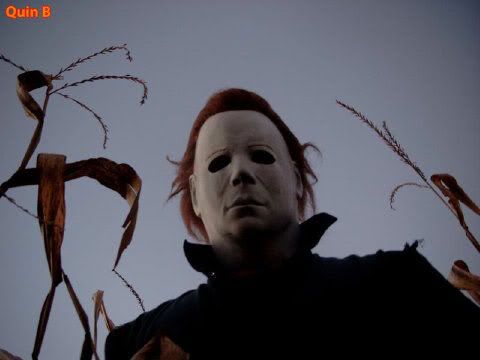
Sadako Yamamura
is the antagonist in Koji Suzuki's novel Ring and the 1998 film adaptation. She returns as the antagonist in Rasen, is the protagonist in Ring 0: Birthday, and appears in the Korean and American remakes of the Ring cycle films.
In the original novel, Sadako was portrayed with testicular feminization syndrome, meaning that she was anatomically male. In both the novels and movies, it is possible to infer that she is the daughter of some oceanic based entity, making her a quasi-oceanic demigod.
Her name combines the Japanese words for "chaste" (sada) and "child" (ko).
The most recognizable image of Sadako is a shadowy woman whose face is covered in hair, crawling out of a television. This appearance is typical of Japanese ghosts, who are known as yūrei. Specifically, Sadako is a type of yūrei known as an onryō, a yūrei bound by a desire for vengeance.
Yūrei are Japanese ghosts, ones who have been bound to the physical world through strong emotions which do not allow them to pass on. Depending on the emotion that binds them, they manifest as a particular type of ghost.
Like many creatures of folklore, yūrei have a traditional appearance and follow a certain set of rules. They are generally female, although male yūrei do exist. They wear white clothing, which is the color of clothing that corpses are traditionally dressed with in Japan. They have long, often unkempt black hair and white faces, which comes from Kabuki theater where each character has a particular type of wig and make-up that identifies them to the audience. (Although it may also come from the fact that while Japanese women usually wore their hair in a bun, for funeral and burial, their long hair is let loose)
In addition to the standard yūrei appearance, Sadako is also an amalgamation of two famous Japanese ghosts, Oiwa and Okiku. From Oiwa, Sadako takes the single, misshapen eye. From Okiku, the style of murder, of being thrown down a well and then having the ghost rise from the well to seek vengeance.
The success of the 1998 film Ring brought the image of the yūrei to Western popular culture for the first time, although the image has existed in Japan for centuries. This image is often used in J-Horror films, such as Ju-on (and its remake The Grudge), One Missed Call and Dark Water.



The videotape
Main article: The Cursed Videotape
In the films her method of killing with the video curse is not explained, but when someone is killed by it she is seen climbing out of the nearest reflective surface (the most famous portrayal of this being her crawl from a television screen) and approaching them. The corpses are discovered with looks of unearthly anguish on their faces, so it could be concluded that they "die of fright", i.e. a heart attack. In Rasen, the curse is explained in detail, and is discovered to in fact be a virus. When someone watches the cursed tape (or something else carrying the curse) some of their DNA is changed to become that of the Ring Virus (i.e. a hybrid of Sadako's DNA and that of the smallpox virus). This travels through their body and in most cases causes a sarcoma to form on one of the arteries of their heart. If the curse has not been appeased within seven days, the sarcoma detaches from the artery and clogs it, causing heart failure.
Other powers
In Ring 0 Sadako exhibits a variety of abilities (mentioned above), including telekinesis, the ability to kill people instantly with psychic powers, healing abilities,
ESP, and possibly the ability to split herself into two beings and merge them again.
Due to her curious new biology, Sadako also seems to be able to resurrect people (with some help from a genetic scientist) at the end of Spiral.
In Ring 2 the protagonists discover that Sadako was alive in the well for 30 years, dying shortly before she was uncovered in the previous film by Reiko Asakawa. This implies that she had remained alive until she imparted her curse onto the tape, meaning that she also had superhuman endurance and longevity, as well as inedia (the ability to live for extended periods without nourishment).
In the original Japanese films, Sadako's tapes cause their victims to have odd and malformed images when photographed. These images remain until Sadako kills the victim.
Lastly, she imparts her curse onto the video tapes, implying the ability of projected thermography.





























![[01162010825.jpg]](http://3.bp.blogspot.com/_yW2ANr_nKIc/S1XBKpixyUI/AAAAAAAADEA/fPy9FbTtZXE/S220/01162010825.jpg)


![[butterfriend.jpg]](http://1.bp.blogspot.com/_Ri0G0gzR4d0/SkxDyvxcSJI/AAAAAAAAAXE/_2VGZ9sYKYs/S220/butterfriend.jpg)
![[Copy+of+Tekkaus-Thumbnail+new+Large.jpg]](http://4.bp.blogspot.com/_-Hix91sgv_s/Si30Wc-3HPI/AAAAAAAAAPg/HG6H4WvkFJ0/S220/Copy%2Bof%2BTekkaus-Thumbnail%2Bnew%2BLarge.jpg)



